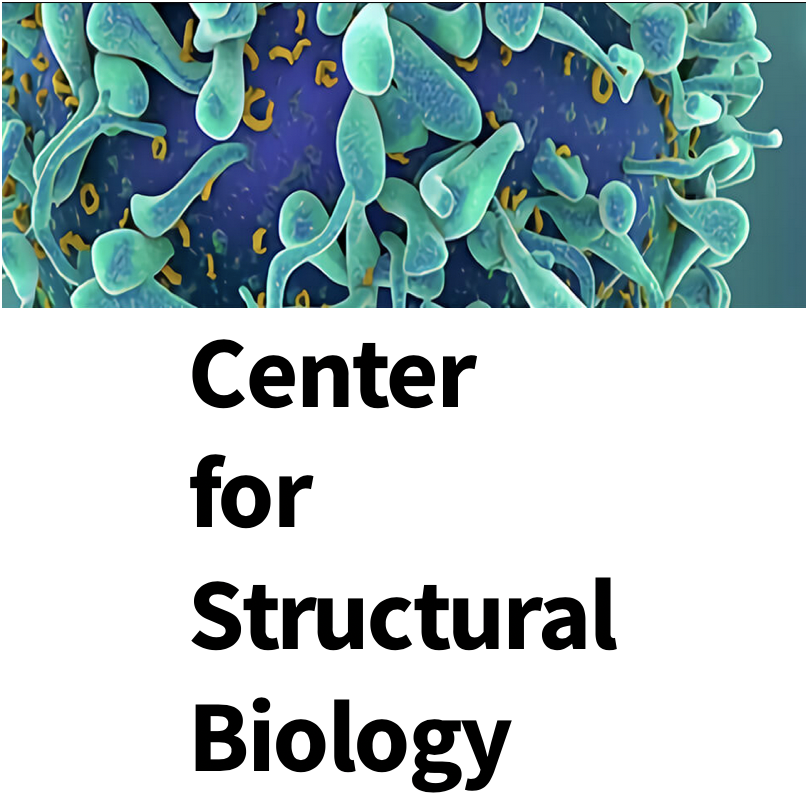Vanderbilt’s Center for Structural Biology is at the forefront of advancing medicine and biology
Understanding the structure and dynamics of proteins, and their interactions with other molecules, is critical to unraveling normal physiological function and identifying the fundamental causes of disease. While DNA sequences provide critical information that can readily be obtained, decoding the functional information stored in genomic data is an immense challenge, in particular for important human protein complexes and membrane proteins that are central to health and disease. The key to addressing the most fundamental problems in medicine and biology is to translate the gene sequences into understanding the biological function of the proteins they code. After the straight forward conversion of the gene into protein sequence, the critical step is to understand the 3D structure of the protein. Due to their extreme complexity, the only way forward for the molecular systems that drive fundamental medicine and biology is to call upon the entire array of techniques available to obtain structural information. The Center for Structural Biology (CSB), at Vanderbilt University, was an early investor in adopting the integration of structural techniques to address this grand challenge. As one of the most comprehensive centers in structural biology in the world, the CSB has a dynamic group of faculty that readily collaborate and integrate multiple methods to tackle challenges in fundamental and biomedical research, therefore making it a hub of translational research.
The CSB ensures that the powerful integrated structural biology philosophy is being successfully applied not only in the labs of structural biology experts, but also in very exciting ways through collaborations with a wide range of biomedical researchers at Vanderbilt and around the world. By (a) providing for the acquisition and operation of the multi-million dollars instruments and computers, (b) supporting a range of faculty research programs; training students and postdoctoral fellows, and (c) providing education and outreach for the use of structural biology approaches to all scientists in life science-related research, the CSB has become a world leader in structural biology and has set out to advance the frontiers of fundamental science and medicine. After 15 years in the making, the highly collaborative research programs within the CSB span virtually all major diseases including cancer, diabetes, aging and neurological disorders, heart disease, and bacterial and viral infections.
Key research areas include:
-
Integral Membrane Proteins: Roughly 25% of all proteins in the human genome are integral membrane proteins (MPs) and since these link the inside of the cell to its external environment, more than 50% of all drugs target MPs. However, the development of new drugs to specifically target these proteins remains difficult, in large part because it is extremely difficult to obtain high-quality structures of MPs. The integrated structural biology approach of the CSB is the only way possible to understand the structural basis for function of these highly complex proteins. Seven different Core Faculty work together to create powerful research programs that integrate information from crystallography, NMR, EPR and computation. CSB Core Faculty have made leading contributions in this field, including with transporters, proteins critical to respiration, and key Alzheimer’s Disease proteins.
-
Multi-Molecular Complexes and Machines: Although it is widely recognized that molecules function in the context of large assemblies, we still do not understand how they are organized and coordinated to carry out their functions. Researchers in the CSB are at the forefront of using integrated structural approaches to understand how macromolecular machines function in cells. Seven CSB Core Faculty using a combination of X-ray crystallography, NMR spectroscopy, electron microscopy, and small angle X-ray scattering are making leading contributions, particularly in the areas of infectious disease and genome duplication, maintenance and repair.
-
Structure-based Drug Discovery: Vanderbilt has already established two successful programs in neuroscience and cancer drug discovery. The latter is directed by CSB member Stephen Fesik, who pioneered fragment-based approaches to structure-based drug design during 25 years at Abbott Pharmaceuticals. Several collaborative groups of CSB Core Faculty have adopted fragment based discovery and now have a wide range of targets in pipelines for treating cancer, Alzheimer’s disease, and diabetes.
Bio
The Center for Structural Biology’s beginnings date back to 1998 when current director, Dr. Walter Chazin, came to Vanderbilt as a consultant and suggested the university consider enhancing its research enterprise by incorporating a holistic (integrated) view of Structural Biology. After being commissioned to develop a plan to meet the needs of the university, Dr. Chazin was recruited in 1999 to implement and lead the Center. Today, the Center is the focal point for a large community of 25 faculty research groups with over 100 students and postdoctoral fellows; Dr. Chazin continues to lead with as much passion as the original spark that ignited the creation of the Center itself. Guided by a philosophy that places an importance on integrating applications of all techniques that can provide the atomic resolution structure of biomacromolecules, the Center has created an environment that provides open access to all of the tools for research at the very cutting-edge of biomedical research. Their unique integrated philosophy has been successfully applied in exciting ways in collaborations within the University, across the country, and around the world.
Website: http://structbio.vanderbilt.edu/

